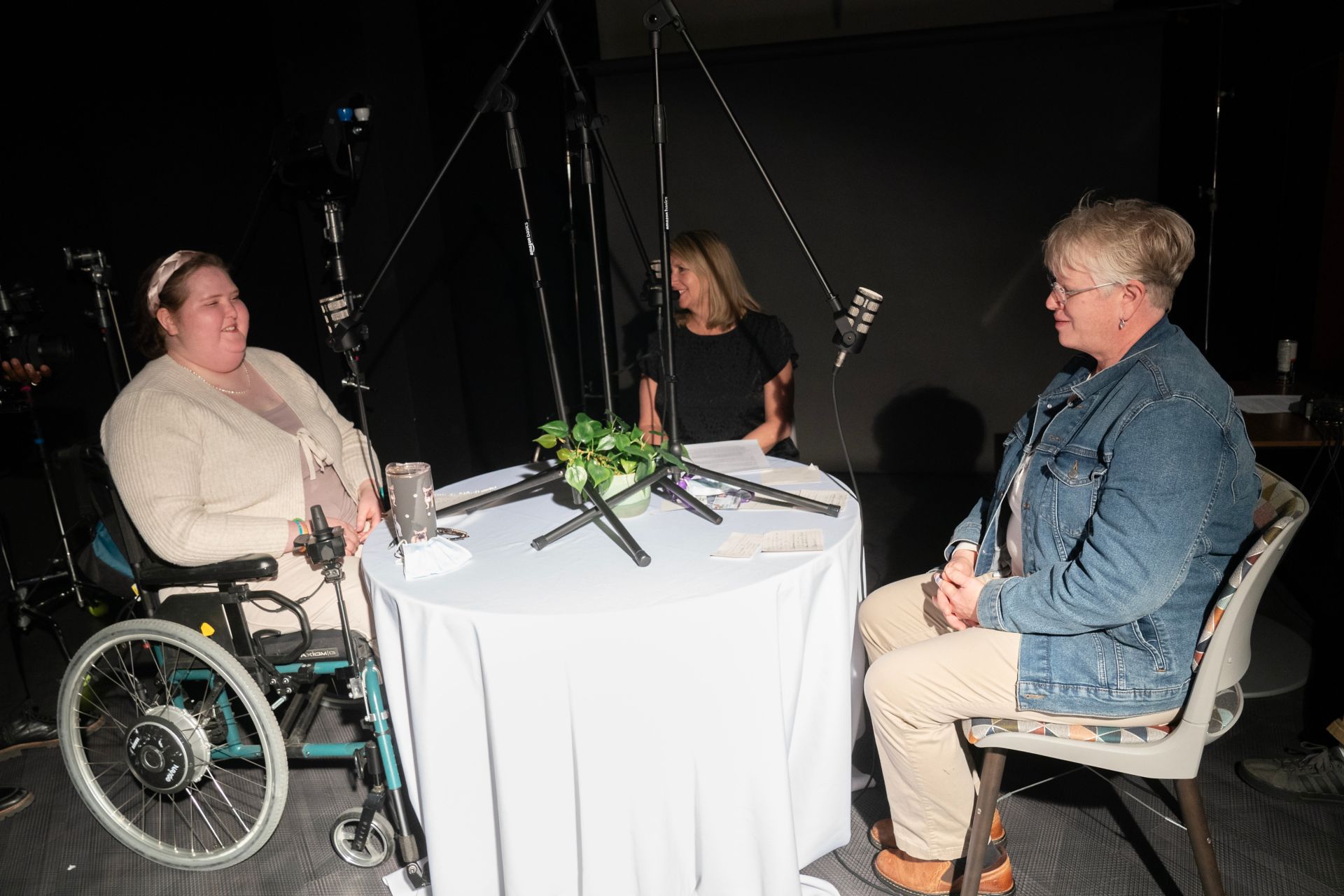St. Jude Family of Websites
Explore our cutting edge research, world-class patient care, career opportunities and more.
St. Jude Children's Research Hospital Home

- Fundraising
Retinoblastoma Treatment
Retinoblastoma is a rare cancer in the eye. It begins in the retina. The retina is the thin membrane on the back of the eye. It senses light and color and sends messages to the brain so that we can see.
Unilateral retinoblastoma is the most common retinoblastoma. It affects only 1 eye. Bilateral retinoblastoma affects both eyes. Most retinoblastoma stays in the eye. If it is not treated, it can spread to other parts of the body.
Retinoblastoma is rare. It is usually diagnosed in children under age 3. Children over age 5 rarely develop retinoblastoma.
Find out more about retinoblastoma on the Together by St. Jude™ online resource.

"I think the biggest thing my mom did to help love and support me through my illness was when she listened to me and helped me learn how to advocate for myself."
Treatment of retinoblastoma
Retinoblastoma treatment depends on the patient’s age and how much the disease has spread. Treatment may include:
- Surgery
- Chemotherapy
- Focal therapy
- High-dose chemotherapy with a stem cell (bone marrow) transplant
- Radiation therapy
Retinoblastoma clinical trials
St. Jude offers clinical trials and cancer research studies for children, teens, and young adults with retinoblastoma and other solid tumors.
Study goal:
The main goal of this research study is to help us learn how to better treat pain and symptoms in children going through chemotherapy cancer treatment.
Age:
8 to 18 years old
Study goal:
To find out whether repotrectinib is safe to use in children and young adults and whether it might work against tumors.
Age:
Up to 25 years old
Study goal:
To better understand the prevalence of sleep disorders in long-term survivors of childhood ALL, CNS tumors, and non- CNS solid tumors
Age:
18 years and older
Study goal:
To study biomarkers in aqueous humor and other samples to improve diagnosis and treatment for retinoblastoma
Age:
0–18 years
St. Jude provides the highest quality of care for patients with retinoblastoma:
- Your child will have access to a large clinical team of pediatric oncologists, ocular oncologists, pediatric ophthalmologists, surgeons, radiation treatment specialists, rehabilitation specialists, and genetic counselors. This team is one of the largest groups in the world dedicated to the treatment of children with retinoblastoma.
- Retinoblastoma treatment at St. Jude includes on-site services to enhance your child’s quality of life. These treatments include physical therapy and speech therapy. It also includes a low-vision rehabilitation clinic for children whose sight has been affected. These specialists work together so that each patient can make the most of the vision that remains.
- We are working to improve ocular salvage (saving the eye) and preserve vision for our patients. Our researchers are also focused on finding new strategies to treat rare diseases such as retinoblastoma.
- St. Jude scientists have found possible targeted therapies that kill retinoblastoma cells better than compounds used in the past. These drugs may dramatically impact the treatment of this type of cancer in children.
- Cancer survivors, especially those cured at a young age (such as retinoblastoma patients), face medical and psychosocial challenges as they age. The After Completion of Therapy (ACT) Clinic provides close monitoring and resources for managing late effects of disease and therapy. Clinic services are available to St. Jude patients until they are 18 years of age or until 10 years after diagnosis, whichever is later.
More reasons to choose St. Jude for care include:
- We are consistently ranked among the best childhood cancer centers in the nation by US News & World Report.
- At St. Jude, we have created an environment where children can be children and families can be together.
- St. Jude patients and families never pay for services authorized by St. Jude.
- We lead more clinical trials for childhood cancer than any other hospital in the U.S.
- St. Jude is the only National Cancer Institute–designated Comprehensive Cancer Center just for children. A Comprehensive Cancer Center meets rigorous standards for research that develops new and better approaches to prevent, diagnose, and treat cancer.
- The nurse-to-patient ratio at St. Jude is about 1:3 in hematology and oncology and 1:1 in the Intensive Care Unit.
- Patients may be able to get expert, compassionate care and treatment closer to their homes through our St. Jude Affiliate clinics.

Seeking treatment at St. Jude
Patients accepted to St. Jude must have a disease we treat and must be referred by a physician or other qualified medical professional. We accept most patients based on their ability to enroll in an open clinical trial.
Contact the Physician / Patient Referral Office
Call: 1-888-226-4343 (toll-free) or 901-595-4055 (local) | Fax: 901-595-4011 | Email: referralinfo@stjude.org | 24-hour pager: 1-800-349-4334